
The Comic Book Thread
Moderator: Controllers
Recently started rereading Keith Giffin Doom Patrol run. Its fun and has just the right amount of angst that i actually give a crap about the characters. Its sad this comic got cancelled but for what its worth it has some neat characters, constante art and some really good dailog. I love myself some Robotman. 


-

Inferior Rodan - Godzilla
- Posts: 549
- Joined: Mon Aug 09, 2004 10:51 am
- Location: I fly around
Well, when I discovered him, I just thought he was funny. He broke the fourth wall a lot and that sort of humor really appealed to me. Anymore, I can care less, but I was initially very taken with him.
"We Can't Stop Here, This is Bat Country!"


-
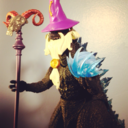
MekaGojira3k - Millennium Godzilla
- Posts: 18288
- Joined: Sat Aug 09, 2003 11:13 am
- Location: Ky, USA

BPRD has been terrific lately. It's always been good, but the past two or three years have been especially.
This latest issue is really rewarding to longtime readers in its bringing a long-simmering subplot to the forefront, but even newbies (especially on this message board) might want to check it out for one of the best monster vs. monster fights I've ever seen represented in comics.
-
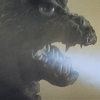
lhb412 - Millennium Godzilla
- Posts: 16263
- Joined: Sun Jul 27, 2003 7:11 pm
In the last year or two I've been reading more comics than ever, from new creator-owned stuff to old newspaper reprints, yet I always resisted being labeled as a "comics fan" because my interests often lie outside the mainstream of that fandom. Recently, I had a kind of epiphany: most people we label comic fans are really superhero fans, and I really was a comic fan all along despite what I had thought.
Now that I have come out of the comic fan closet I've decided to get to know as much about comics, all kinds of comics, as possible. I took a bit of a wide view and listed three main geographic hubs of comics: American, European (Brits have a foot in both pools), and Japanese Manga. Of course, comics are made everywhere, but those strike me as the places where the culture has been historically the most robust. Since I knew most about US comics (though I have a lot to learn) and something about how to approach Japan (there are definitely some Osamu Tezuka purchases in my future) I've decided to launch into Europe's scene. My first (besides some of Herge's Tintin albums) was the classic Asterix series, which I've been really enjoying the last few months, and in the past few weeks I've sampled some more.
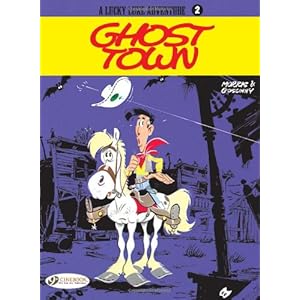
Got the Lucky Luke album "Ghost Town" by Rene Goscinny, author of Asterix. Goscinny is pretty much just bellow Herge in the Euro comic hierarchy (but I like Goscinny better). I don't think the setting and characters are as interesting and inventive as Asterix, Lucky Luke is a good guy cowboy in the vein of pre-cynical western heroes like Gene Autry, but it has this easygoing zip to it that was just nice. Love all of Luke's gun-slinging sight-gags. Morris is no Uderzo (the illustrator of Asterix), but he's no slouch, either.

Read the adventure of "The Yellow 'M'" of the Blake and Mortimer series, by Herge's assistant E.P. Jacobs (so it's very much in the same style as Tintin). This one was a bit harder to get into: the serial nature of original publication really shows as the story starts and stops over and over. It's also text heavy with the kind of earnest and dry dialogue often parodied in older genre material that can be quite repetitive. There was a lot of unneeded, constant narration in places where the artwork alone would tell the same thing far more effectively. Not to say I hated this adventure; the art set a great mood and the overall tone of the work (incredibly proper English blokes in cloak and dagger and sci-fi capers) is pretty cool.
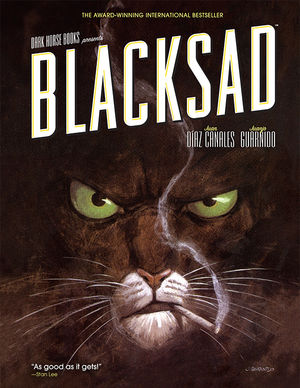
Then I read Dark Horse's collection of the first three Blacksad albums. Unlike my other samples this is a contemporary work and not a classic of the '50s and '60s. First of all, I have to say that this is some of the best comic art I've ever seen. It's spectacular and worth the price of admission alone. The cinematic nature is great, as is the characterization. I also felt the series improved as the makers got more experience: the first book is splendid, but the central mystery is a bit simple and straightforward; the second is more ambitious and complex in its mystery, but I didn't quite buy the resolution; in the third volume everything clicked, just perfect.
The characters of Blacksad are anthropomorphic animals, btw. They're done in a very interesting way; like Jim Steranko says in the intro, they're predicated on how people look like animals, so the gorilla looks a lot like a real, biolicial gorilla, but has something about him of a real person who looks like a gorilla (Steranko likens the simian boxing champ in book one to Ernest Borgnine).
This is also, of my four samples, one definitely not safe for kiddies.
I can't wait for Dark Horse to publish the forth Blacksad adventure (published in Europe in 2010) in a few months.

Fantagraphics just published the first English translation of the Gil Jordan, Private Detective series, doubling up with two albums in one hardcover volume. It's just such a great combination of elements: taking (broadly speaking) the Herge style of cartooning but making the characters a bit more "cartoony" and expressive; adding more humor (Gil is certainly more sarcastic and cynical than boy reporter Tintin); and telling darker (but not too dark for older kids) mystery stories. I like how the four main characters interact with each other... it's just great, all around.
This is the first Gil Jordan release by Fantagraphics. I don't know if there's any sort of guarantee for more, but I sure hope they continue.
Now that I have come out of the comic fan closet I've decided to get to know as much about comics, all kinds of comics, as possible. I took a bit of a wide view and listed three main geographic hubs of comics: American, European (Brits have a foot in both pools), and Japanese Manga. Of course, comics are made everywhere, but those strike me as the places where the culture has been historically the most robust. Since I knew most about US comics (though I have a lot to learn) and something about how to approach Japan (there are definitely some Osamu Tezuka purchases in my future) I've decided to launch into Europe's scene. My first (besides some of Herge's Tintin albums) was the classic Asterix series, which I've been really enjoying the last few months, and in the past few weeks I've sampled some more.

Got the Lucky Luke album "Ghost Town" by Rene Goscinny, author of Asterix. Goscinny is pretty much just bellow Herge in the Euro comic hierarchy (but I like Goscinny better). I don't think the setting and characters are as interesting and inventive as Asterix, Lucky Luke is a good guy cowboy in the vein of pre-cynical western heroes like Gene Autry, but it has this easygoing zip to it that was just nice. Love all of Luke's gun-slinging sight-gags. Morris is no Uderzo (the illustrator of Asterix), but he's no slouch, either.

Read the adventure of "The Yellow 'M'" of the Blake and Mortimer series, by Herge's assistant E.P. Jacobs (so it's very much in the same style as Tintin). This one was a bit harder to get into: the serial nature of original publication really shows as the story starts and stops over and over. It's also text heavy with the kind of earnest and dry dialogue often parodied in older genre material that can be quite repetitive. There was a lot of unneeded, constant narration in places where the artwork alone would tell the same thing far more effectively. Not to say I hated this adventure; the art set a great mood and the overall tone of the work (incredibly proper English blokes in cloak and dagger and sci-fi capers) is pretty cool.

Then I read Dark Horse's collection of the first three Blacksad albums. Unlike my other samples this is a contemporary work and not a classic of the '50s and '60s. First of all, I have to say that this is some of the best comic art I've ever seen. It's spectacular and worth the price of admission alone. The cinematic nature is great, as is the characterization. I also felt the series improved as the makers got more experience: the first book is splendid, but the central mystery is a bit simple and straightforward; the second is more ambitious and complex in its mystery, but I didn't quite buy the resolution; in the third volume everything clicked, just perfect.
The characters of Blacksad are anthropomorphic animals, btw. They're done in a very interesting way; like Jim Steranko says in the intro, they're predicated on how people look like animals, so the gorilla looks a lot like a real, biolicial gorilla, but has something about him of a real person who looks like a gorilla (Steranko likens the simian boxing champ in book one to Ernest Borgnine).
This is also, of my four samples, one definitely not safe for kiddies.
I can't wait for Dark Horse to publish the forth Blacksad adventure (published in Europe in 2010) in a few months.

Fantagraphics just published the first English translation of the Gil Jordan, Private Detective series, doubling up with two albums in one hardcover volume. It's just such a great combination of elements: taking (broadly speaking) the Herge style of cartooning but making the characters a bit more "cartoony" and expressive; adding more humor (Gil is certainly more sarcastic and cynical than boy reporter Tintin); and telling darker (but not too dark for older kids) mystery stories. I like how the four main characters interact with each other... it's just great, all around.
This is the first Gil Jordan release by Fantagraphics. I don't know if there's any sort of guarantee for more, but I sure hope they continue.
Last edited by lhb412 on Wed Apr 25, 2012 9:46 am, edited 1 time in total.
-

lhb412 - Millennium Godzilla
- Posts: 16263
- Joined: Sun Jul 27, 2003 7:11 pm
J. Caleb Mozzocco gives a great write-up to Popeye #1 (which came out this week) at CBR:
Okay, IDW has yet to convince me with their Godzilla comics (I haven't read Legends yet, and Half Century War looks mighty interesting), but right out of the gate this Popeye comic gets everything right.
Okay, IDW has yet to convince me with their Godzilla comics (I haven't read Legends yet, and Half Century War looks mighty interesting), but right out of the gate this Popeye comic gets everything right.
-

lhb412 - Millennium Godzilla
- Posts: 16263
- Joined: Sun Jul 27, 2003 7:11 pm
As a part of my little "exploring comics" journey I've laid out a little road map about what things I want to try. Some are individual graphic novels, some are series or artists that I merely want to sample to see if I like. Some are historically relevant, while others are just ones I really want to try.
European Comics
-Already checked out Asterix, Lucky Luke, Blake and Mortimer, Gil Jordan and Blacksad...
-Iznogoud (also by Asterix scribe Rene Goscinny)
-Valerian and Laureline
-Corto Maltese
-Yoko Tsuno
-Tintin (read a couple a few years ago, should give it another go)
-(artist) Jason
-(artist) Moebius (his stuff is really hard to get here in the US, though!)
U.S. Comics
-Superheroes: '60s Spider-Man/Fantastic Four, Silver Age Superman, '70s Batman
-Love and Rockets
-Bone
-Scott Pilgrim
-E.C. Comics (Tales from the Crypt and war stuff, luckily Fantagraphics is starting a reprint series this year)
-Archie
-Mad Magazine
-King City
-The Marquis (I'm a big Guy Davis fan, so it's a wonder I haven't read this)
-(strip) Krazy Kat
-(strip) Peanuts (yeah, already pretty sure I'll like this. Read a bunch of reprints as a kid)
-(artist) Sergio Aragones
-(artist) Will Eisner
Manga
-Osamu Tezuka (Astro Boy, Black Jack, ect.)
-Naoki Urasawa (Pluto, 20th Century Boys)
-Akira
-Lone Wolf and Cub
-Lupin III
-Trigun Maximum (I loved the show)
European Comics
-Already checked out Asterix, Lucky Luke, Blake and Mortimer, Gil Jordan and Blacksad...
-Iznogoud (also by Asterix scribe Rene Goscinny)
-Valerian and Laureline
-Corto Maltese
-Yoko Tsuno
-Tintin (read a couple a few years ago, should give it another go)
-(artist) Jason
-(artist) Moebius (his stuff is really hard to get here in the US, though!)
U.S. Comics
-Superheroes: '60s Spider-Man/Fantastic Four, Silver Age Superman, '70s Batman
-Love and Rockets
-Bone
-Scott Pilgrim
-E.C. Comics (Tales from the Crypt and war stuff, luckily Fantagraphics is starting a reprint series this year)
-Archie
-Mad Magazine
-King City
-The Marquis (I'm a big Guy Davis fan, so it's a wonder I haven't read this)
-(strip) Krazy Kat
-(strip) Peanuts (yeah, already pretty sure I'll like this. Read a bunch of reprints as a kid)
-(artist) Sergio Aragones
-(artist) Will Eisner
Manga
-Osamu Tezuka (Astro Boy, Black Jack, ect.)
-Naoki Urasawa (Pluto, 20th Century Boys)
-Akira
-Lone Wolf and Cub
-Lupin III
-Trigun Maximum (I loved the show)
-

lhb412 - Millennium Godzilla
- Posts: 16263
- Joined: Sun Jul 27, 2003 7:11 pm
I liked Scott Pilgrim a lot, and Bone is reaaalllyy fun (though I never made it past vol. 3).
"We Can't Stop Here, This is Bat Country!"


-

MekaGojira3k - Millennium Godzilla
- Posts: 18288
- Joined: Sat Aug 09, 2003 11:13 am
- Location: Ky, USA
So, Felecia Day has this Youtube channel and Dark Horse comics is producing motion comics of their characters as a regular feature.
I love the Usagi story they chose, but the execution is pretty awkward in all respects (animation, direction, voice acting), but he Concrete one they put up turned out really well!
Next up: Hellboy!
I love the Usagi story they chose, but the execution is pretty awkward in all respects (animation, direction, voice acting), but he Concrete one they put up turned out really well!
Next up: Hellboy!
-

lhb412 - Millennium Godzilla
- Posts: 16263
- Joined: Sun Jul 27, 2003 7:11 pm
A friendly reminder that tomorrow is Free Comic Book Day, so make sure to go!
I'll be trying to get Fantagraphics' Carl Barks issue and Boom's Adventure Time/Peanuts issue... if I have the time. I have to go to this stupid graduation and put on this lame cap and gown and walk across this stupid stage...

I'll be trying to get Fantagraphics' Carl Barks issue and Boom's Adventure Time/Peanuts issue... if I have the time. I have to go to this stupid graduation and put on this lame cap and gown and walk across this stupid stage...
-

lhb412 - Millennium Godzilla
- Posts: 16263
- Joined: Sun Jul 27, 2003 7:11 pm
-
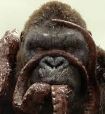
mr.negativity - Meltdown Godzilla
- Posts: 8715
- Joined: Sat Dec 27, 2003 7:27 am
- Location: The Negative Zone
lhb412 Are you considering reading Naoki Urasawa's take on "The Greatest Robot in the World" "Pluto"? I found about 80% of it to be riveting.
"The Bird did not look like Rodan, but he sensed it was the spirit of Rodan."
Mike Hanlon (It by Stephen King)
Mike Hanlon (It by Stephen King)
-

Thomas - Godzilla
- Posts: 572
- Joined: Mon Jul 05, 2004 9:30 pm
- Location: chicago illinois formerly from DETROIT!!
WOOOOHOOOOO! Roger Langridge's Popeye is now an ongoing series!
...oh, and he's made a statement that he will no longer work for DC or Marvel due to an ethical stance on his part about creator rights. Read about it here:
http://www.bleedingcool.com/2012/05/11/ ... -concerns/
Also, there's a cool new miniseries I want to recommend: Resident Alien issue #0 is out right now and it collects the the eight page installments the series had in Dark Horse Presents. It'll be the first issue of a 4 issue mini. It's about a Roswell-style crashed alien living on Earth and doing a pretty good job of hiding by masquerading as a reclusive doctor in a small town, but when the town doctor is murdered local authorities seek him out as a temporary replacement - and our alien protagonist is getting rather bored of hiding and wants to get to know these humans more up close... he's also become infatuated with murder mysteries (I think you can see where this is going).

------------ (EDIT)
Holy moly. Turns out Popeye #1 sold... really well.
http://www.bleedingcool.com/2012/05/09/ ... -whaddaya/
...oh, and he's made a statement that he will no longer work for DC or Marvel due to an ethical stance on his part about creator rights. Read about it here:
http://www.bleedingcool.com/2012/05/11/ ... -concerns/
Also, there's a cool new miniseries I want to recommend: Resident Alien issue #0 is out right now and it collects the the eight page installments the series had in Dark Horse Presents. It'll be the first issue of a 4 issue mini. It's about a Roswell-style crashed alien living on Earth and doing a pretty good job of hiding by masquerading as a reclusive doctor in a small town, but when the town doctor is murdered local authorities seek him out as a temporary replacement - and our alien protagonist is getting rather bored of hiding and wants to get to know these humans more up close... he's also become infatuated with murder mysteries (I think you can see where this is going).

------------ (EDIT)
Holy moly. Turns out Popeye #1 sold... really well.
http://www.bleedingcool.com/2012/05/09/ ... -whaddaya/
-

lhb412 - Millennium Godzilla
- Posts: 16263
- Joined: Sun Jul 27, 2003 7:11 pm
Yeah, last year's FCBD issue is what got me into it. I really hope they do more with Doctors Louis and Martin, two action scientists that show up at the back end of volume three and then make a hilarious reappearance in volume six. The nature of their banter is wonderful.
Artisanal Practical Effects & Kaiju Content
- kiryugoji04
- Meltdown Godzilla
- Posts: 7741
- Joined: Sat Dec 20, 2003 4:50 pm
- Location: Atlanta, Jawjuh
Who is online
Users browsing this forum: No registered users and 9 guests


